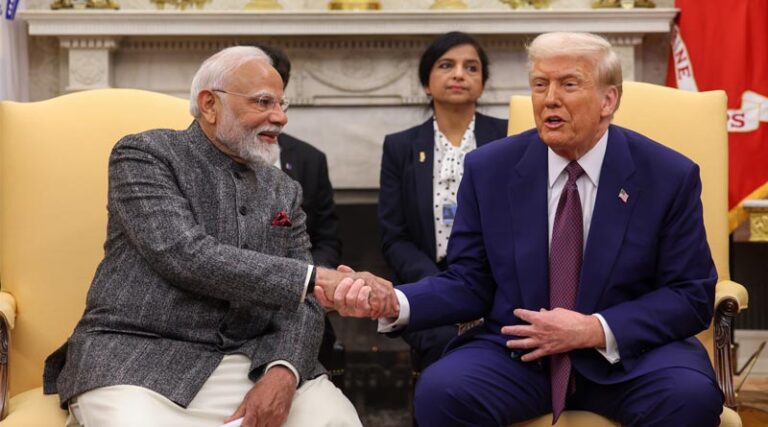
Trump’s 25% Tariff Threat Puts $2 Billion Indian Agri-Food Exports to U.S. at Risk
31 July 2025, New Delhi: India’s agri-food exports to the United States – valued at nearly USD 1.95 billion in FY 2024–25 – face serious disruption after former U.S. President Donald Trump announced a 25% tariff on Indian goods, effective August 1. In a strongly worded social media post, Trump cited India’s “high tariffs, harsh non-tariff barriers,” and close military and energy ties with Russia as reasons for this unilateral trade move.
The announcement has sparked alarm across India’s agri-export industry, especially among exporters of Basmati rice, dairy, herbal, and processed food products, which dominate shipments to the U.S. market.
India’s Agricultural Exports to the U.S. (2024–25)
| Product Category | Export Value (USD Million) | Quantity (MT) |
| Basmati Rice | 337 | 2,74,213 |
| Miscellaneous Processed Items | 252 | – |
| Dairy Products | 205 | 86,830 |
| Ayush and Herbal Products | 189 | 27,817 |
| Processed Fruits & Juices | 161 | 96,522 |
| Cereal Preparations | 161 | 75,002 |
| Processed Vegetables | 113 | 58,376 |
| Cocoa Products | 112 | 8,788 |
| Guargum | 103 | 55,440 |
| Pulses | 66 | 39,074 |
| Milled Products | 65 | 51,154 |
| Non-Basmati Rice | 55 | 61,915 |
| Fresh Fruits | 36 | 10,488 |
| Fruits/Vegetable Seeds | 28 | 597 |
| Fresh Vegetables | 21 | 14,878 |
| Floriculture | 21 | 2,203 |
| Alcoholic Beverages | 10 | 2,851 |
| Cashew | 8 | 1,044 |
| Other Cereals | 5 | 3,714 |
| Buffalo Meat | 1 | 2,250 |
| Cashew Nut Shell Liquid | 0.1 | 69 |
| Other Meat | 0.1 | 2 |
| Groundnut | 0.1 | 3 |
| Poultry Products | 0.1 | 0.1 |
| Total | 1,949 | 8,73,229 |
Industry Reaction
Stakeholders fear that a 25% tariff could cripple their competitiveness in the U.S. market, particularly in premium and value-added segments where India has built a strong brand.
“Such a steep tariff hike could lead to massive order cancellations and rerouting of supply chains,” said a Delhi-based agri-exporter. “For sectors like Basmati rice and herbal products, this is not just about economics, but long-term reputation.”
Strategic Fallout
Trump’s post also criticized India’s ongoing purchase of energy and defense equipment from Russia — calling it a “bad move during a time of war” — and labeled India’s trade practices as “obnoxious.”
The Indian government has yet to issue a formal response, though trade analysts suggest the announcement may be driven by political considerations ahead of the U.S. elections.
If implemented, the tariff could directly impact thousands of farmers, processors, and exporters who depend on the U.S. market. Given the volume of over 873,000 metric tonnes of agri-food exports already shipped in 2024–25, the stakes are high.
What’s Next?
Experts believe India’s best course now lies in diplomatic engagement and strategic diversification of export markets. Simultaneously, businesses may need to re-evaluate logistics and pricing strategies if the tariff comes into force.
📢 If You’re in Agriculture, Make Sure the Right People Hear Your Story.
From product launches to strategic announcements, Global Agriculture offers unmatched visibility across international agri-business markets. Connect with us at pr@global-agriculture.com to explore editorial and advertising opportunities that reach the right audience, worldwide.






